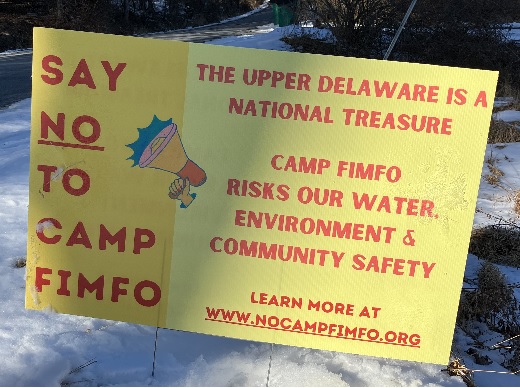Tainted Water Spurs Evacuations
April 23, 2010Statoil to Move Marcellus Gas to Canada
May 6, 2010By MIREYA NAVARRO, The New York Times, April 23, 2010
New York State environmental officials announced on Friday that they would impose far stricter regulations on a controversial type of natural gas drilling in the upstate area that supplies most of New York City’s drinking water, making it highly unlikely that any drilling would be done there.
Although they did not impose an outright ban on drilling, state officials said that any natural gas company would have to conduct a separate environmental impact review for each well it proposed to drill in the Catskills watershed, which supplies the city.
Those rules also apply to the smaller Skaneateles Lake watershed, which supplies drinking water to Syracuse and some other communities.
In other areas, companies would face a far less cumbersome permit process that would rely on the state’s own environmental assessment of where drilling can be allowed.
New York City officials and environmentalists had vigorously opposed the drilling, citing concern about the disposal of wastewater from the drilling and the danger of leaks into groundwater and deep aquifers.
The gas companies planned to rely on a technique known as hydraulic fracturing, also called fracking, which involves blasting water mixed with chemicals into rock at high pressure to extract the gas.
With the New York City water issue shelved, state officials clearly hope to put the controversy behind them. They said they expect to release their final regulations on hydraulic fracturing by the end of the year, having solicited more than 14,000 comments from the public.
The decision by the State Department of Environmental Conservation also means that New York City will not have to worry about spending billions of dollars on a filtration plant to protect its water supply from possible contamination by the drilling.
City officials welcomed the announcement. “The additional reviews that D.E.C. has mandated will ensure that the specific and cumulative impacts in the New York City and Syracuse watersheds are understood, and that these unique landscapes are fully protected, as a prerequisite to any drilling activity,” said Cas Holloway, commissioner of New York City’s Department of Environmental Protection.
He said the decision “recognizes that protecting New York’s water supplies must be our top priority.”
The two areas lie within the Marcellus Shale region, a subterranean layer of rock stretching from New York to Tennessee believed to be one of the world’s biggest natural gas fields.
The Catskills watershed supplies drinking water to 8.2 million people in New York City and about one million people in Westchester, Putnam and Dutchess Counties. The Skaneateles Lake watershed serves about 200,000 people in Syracuse and elsewhere.
While the prospect of drilling stirred deep opposition in New York City and nearby counties, it drew support from many upstate residents who argued that the benefits would far outweigh any risks, given the weakness of the economy.
The conservation department’s commissioner, Alexander B. Grannis, said that landowners’ property rights had weighed heavily in the decision not to issue a ban on drilling in the two watersheds. He said that about 70 percent of the property in the watershed is privately owned and that a ban would have undoubtedly brought lawsuits from owners deprived of lucrative leasing deals with gas companies.
“At the end of the day, an outright ban risks very substantial litigation,” he said.
Instead, the department decided to add more scrutiny to any potential application to drill in the two areas, he said.
But while the well-by-well environmental reviews will be a deterrent to the drilling, environmental groups were not claiming victory. Kate Sinding, a senior lawyer with the Natural Resources Defense Council, said nothing but a ban would ensure that gas companies do not exploit the watersheds in the future.
“If they get into the shale and find it productive, they’re going to knock on the door of the watershed,” she said. The two watershed areas account for less than 10 percent of the shale, state officials said. Bowing to public pressure, the Chesapeake Energy Corporation said last October that it would stay away from the New York City watershed despite holding leases that would have allowed it to pursue state permits to drill there.
Jim Smith, a spokesman for the Independent Oil and Gas Association of New York, called the state’s regulatory stance “excessive and unnecessary.”
But he said that there was “not a lot of interest in the watershed from companies” at this point at any rate.
State officials said the two watersheds presented additional concerns that had nothing to do with the safety of the drilling, like pollution from increased truck traffic related to the drilling operations.
By omitting the two watersheds, they said, they will be able to focus on the overall environmental safety of drilling.
“Originally, we thought it’d make sense to address all of this at once,” said Stuart Gruskin, executive deputy commissioner of the Department of Environmental Conservation.
“We acknowledge that there’s a separate subset of issues that are independent of the safety of hydrofracking,” he said. “It’s better to leave those issues out of it.”
The Department of Environmental Conservation came under intense pressure after issuing draft regulations governing the drilling last year. New York City officials pushed to have the regulations withdrawn after commissioning a study that showed drilling could damage infrastructure, including aqueducts.
And in formal comments last December, the federal Environmental Protection Agency told state officials that it had major concerns about how the proposed drilling would affect public health and the environment.
The agency did not specifically call for a ban on drilling in watershed areas, but said it had “serious reservations about whether gas drilling in the New York City watershed is consistent with the vision of long-term maintenance of a high-quality unfiltered water supply.”



